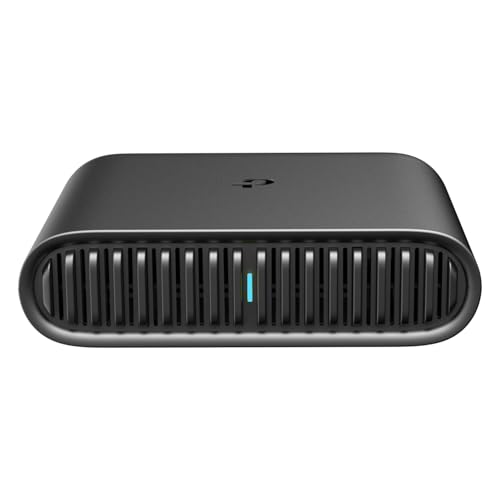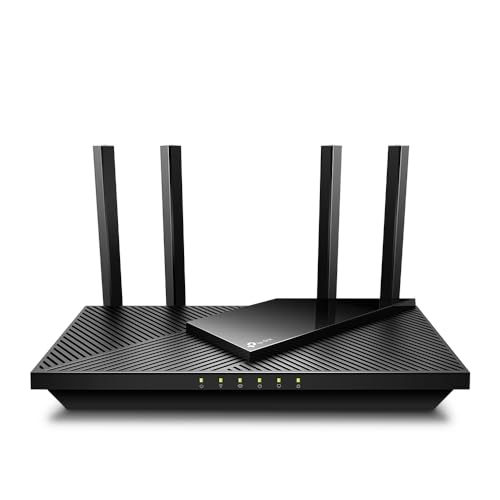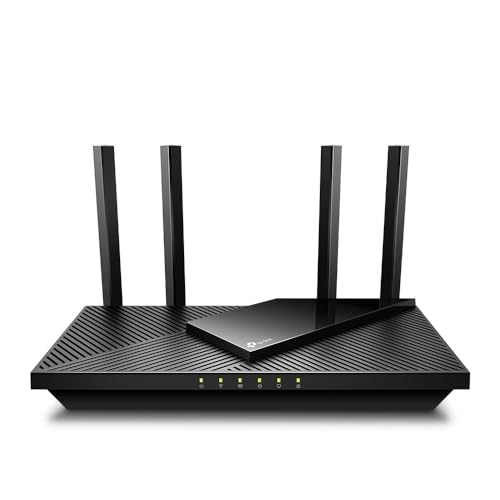what is access point mode on wifi extender is a topic that many people are searching for today. Wondering what access point mode on a WiFi extender means? In simple terms, access point mode allows your extender to create a new wireless network using a wired connection, rather than simply repeating your existing WiFi signal. This setup gives you strong, stable coverage in areas where your main router’s signal can’t reach, making it ideal for homes or offices with WiFi dead zones. Here’s how access point mode works and why it might be the best solution for your connectivity needs.
What is Access Point Mode on WiFi Extender and How It Works
Understanding Access Point Mode on a WiFi Extender
Access point (AP) mode on a WiFi extender refers to a specific operational setting that allows the device to create a wireless network from a wired Ethernet connection. Unlike the traditional extender or repeater mode, which picks up an existing wireless signal and rebroadcasts it to extend coverage, access point mode establishes a new wireless network by connecting directly to your router via Ethernet. This approach provides a dedicated wireless access point for devices in areas with weak or no WiFi signal.
With access point mode, the WiFi extender acts as a bridge between the wired network and wireless devices. It converts the Ethernet signal from the router into a wireless signal, enabling smartphones, laptops, smart TVs, and other WiFi-enabled devices to connect to the internet through a strong and stable signal.
How Access Point Mode Differs from Repeater or Extender Mode
- Connection Source: In access point mode, the extender connects to the router using an Ethernet cable, while in repeater mode, it connects wirelessly.
- Network Creation: Access point mode creates a new WiFi network, often with a unique SSID (network name). In contrast, repeater mode extends the existing wireless network’s coverage using the same or similar SSID.
- Performance: Using an Ethernet connection in access point mode ensures a stable and high-speed link between the router and the extender. Repeater mode may experience signal degradation due to wireless transmission over distance or through walls.
- Coverage: Access point mode is ideal for providing WiFi in areas separated from the main router by significant obstacles, such as thick walls or floors, where wireless signals struggle to penetrate.
When to Use Access Point Mode on a WiFi Extender
Consider access point mode in the following scenarios:
- There are areas in your home or office where the wireless signal from the router cannot reach effectively.
- You have access to the router’s Ethernet ports and can run a cable to the area where improved WiFi is needed.
- You require a stable, high-speed connection for bandwidth-intensive tasks such as video conferencing, online gaming, or streaming in a specific part of the building.
- The building has thick walls, multiple floors, or other obstacles that interfere with wireless signals, making repeater mode less effective.
How Access Point Mode Works on a WiFi Extender
In access point mode, the WiFi extender follows a specific process to deliver reliable wireless coverage:
- Ethernet Connection: The extender connects to the router or network switch via an Ethernet cable. This direct wired link ensures minimal signal loss and high data transfer speeds.
- Network Broadcasting: Once connected, the extender creates a new wireless network. Users can configure the SSID and password during setup, ensuring secure access.
- Device Connectivity: Wireless devices in the coverage area connect to the new network broadcast by the access point. These devices benefit from strong, stable WiFi, as the signal originates from the wired connection.
- Data Flow: When users access the internet or network resources, data travels from their devices to the WiFi extender, then through the Ethernet cable to the router, and out to the web or internal network.
This setup bypasses common issues associated with purely wireless extenders, such as slow speeds or frequent dropouts caused by weak input signals.
Step-by-Step: Setting Up Access Point Mode on a WiFi Extender
Most modern WiFi extenders support both repeater and access point modes. Here’s a general guide to configuring access point mode:
- Position the Extender: Place the extender near the area where you need improved wireless coverage. Make sure there is access to a power source and that you can run an Ethernet cable from your router or network switch.
- Connect via Ethernet: Use a Cat5e, Cat6, or higher Ethernet cable to connect the extender to one of the router’s LAN ports.
- Switch to Access Point Mode: Many extenders have a physical switch or a web-based interface to select the operating mode. Set the device to ‘Access Point’ or ‘AP’ mode.
- Configure WiFi Settings: Using the extender’s web interface or mobile app, set up the SSID (network name), password, and security settings for the new wireless network.
- Finalize and Test: Save the settings and allow the extender to reboot if needed. Test the new network by connecting a device and checking for stable, high-speed internet access.
Always refer to the specific instructions provided by your extender’s manufacturer, as menus and setup steps may vary.
Key Benefits of Using Access Point Mode
- Reliable Performance: Direct wired connection to the router eliminates interference and signal loss, resulting in faster and more consistent WiFi performance.
- Expanded Coverage: Access point mode allows you to add WiFi coverage in areas beyond the reach of your main router, such as basements, garages, or detached buildings.
- Reduced Network Congestion: By creating a separate wireless network, access point mode can help distribute device load more evenly across your home or office.
- Enhanced Security: You have full control over the security settings of the new network, allowing you to set strong passwords and encryption.
- Flexibility: You can deploy multiple access points throughout a large building, all connected via Ethernet, to create seamless WiFi coverage.
Common Use Cases for Access Point Mode
- Multi-Story Homes: In homes with several floors, access point mode allows you to establish strong WiFi coverage on each level by connecting extenders to Ethernet ports.
- Offices and Commercial Buildings: Businesses often use access point mode to provide reliable wireless access in conference rooms, lobbies, and remote offices.
- Outbuildings and Garages: If your property includes detached spaces, running an Ethernet cable and setting up access point mode ensures these areas have robust WiFi.
- Home Theaters and Gaming Rooms: For rooms that demand high-speed internet, such as gaming setups or 4K streaming zones, access point mode delivers the required bandwidth.
How Access Point Mode Impacts Network Performance
Access point mode can significantly improve network performance compared to using a WiFi extender in standard repeater mode:
- Higher Speed: The wired connection from router to extender means the new wireless network can operate at full speed, unaffected by wireless interference or weak signals.
- Lower Latency: Data travels directly over Ethernet, reducing delays and improving the experience for online gaming or video calls.
- Stable Connections: Access point mode avoids the common issue of dropped connections or fluctuating speeds that can occur when extenders rely solely on wireless links.
- Scalability: You can add multiple access points throughout a large space without overburdening your main router’s wireless capacity.
Potential Challenges When Using Access Point Mode
While access point mode offers many advantages, it also comes with a few considerations:
- Ethernet Cabling Required: You must run an Ethernet cable from your router or switch to the location where you want to install the access point. In some cases, this may involve drilling or routing cables through walls.
- Network Configuration: Depending on your network setup, you may need to manually assign IP addresses or tweak settings to prevent conflicts between the main router and access points.
- SSID Management: If you set a unique SSID for each access point, users may need to manually switch networks when moving around the building. Some prefer using the same SSID for seamless roaming, but this requires careful configuration to avoid issues.
Optimizing Your Network with Multiple Access Points
For large homes or business premises, deploying multiple WiFi extenders in access point mode can provide consistent coverage throughout the space. Consider these tips for optimal results:
- Strategic Placement: Position each access point to maximize coverage and minimize signal overlap.
- Channel Selection: Set each access point to a different WiFi channel to avoid interference, especially on the 2.4 GHz band.
- Unified SSID: For seamless roaming, configure all access points with the same SSID, password, and security settings. Enable features like 802.11k/v/r if supported, which can help devices switch smoothly between access points.
- Network Monitoring: Use network management tools to monitor performance and identify areas for improvement.
Typical Features Found in Access Point Mode
- Guest Network Support: Many extenders allow you to set up a separate guest WiFi network for visitors, keeping your main network secure.
- VLAN Tagging: Advanced access points support VLANs for segregating network traffic, useful in business environments.
- Quality of Service (QoS): Some devices offer QoS settings to prioritize bandwidth for specific devices or applications.
- Device Management: Modern extenders may include features for monitoring connected devices, setting parental controls, or scheduling WiFi access.
Security Considerations in Access Point Mode
Proper security is essential when adding new access points to your network:
- Strong Encryption: Always use WPA3 or WPA2 encryption to protect your WiFi network from unauthorized access.
- Unique Passwords: Set complex passwords for both the admin interface and the wireless network.
- Firmware Updates: Regularly check for and install firmware updates to patch vulnerabilities and enhance performance.
- Network Segmentation: Consider setting up separate networks for guests or IoT devices to limit potential security risks.
Compatibility and Device Support
Most WiFi extenders from reputable manufacturers support access point mode, but features and setup procedures vary. Always check the product specifications to ensure compatibility with your router and network environment. Access point mode works seamlessly with modern routers, network switches, and mesh systems. It supports a wide range of devices, including laptops, smartphones, tablets, smart TVs, and smart home gadgets, all benefiting from reliable wireless access.
Summary Table: Access Point Mode vs. Repeater Mode
| Feature | Access Point Mode | Repeater/Extender Mode |
|---|---|---|
| Connection to Router | Wired (Ethernet) | Wireless |
| Network Name (SSID) | Usually Customizable/New | Usually Same/Similar |
| Performance | High, Stable | Can be Lower, Variable |
| Installation Complexity | Requires Ethernet Cabling | Wireless Only, Easier Setup |
| Best Use Case | Areas with Poor or No WiFi, Wired Backhaul Possible | Extending WiFi Where Signal is Present but Weak |
“`
Wireless Access Point vs. Wi-Fi Extender, Which is Better for Home Use?
Frequently Asked Questions
Understanding what is access point mode on wifi extender is crucial for success in this area.
What does access point mode mean on a WiFi extender?
Access point mode lets your WiFi extender create a new wireless network using a wired Ethernet connection. This setup improves WiFi coverage by connecting the extender directly to your router with a cable.
How does access point mode work on a WiFi extender?
When you enable access point mode, the extender uses an Ethernet cable to connect to your main router. It then broadcasts its own wireless signal, providing strong and stable coverage in areas where your router’s WiFi is weak.
When should I use access point mode instead of extender mode?
Use access point mode if you have Ethernet access where you want better WiFi coverage. It works best when you want to avoid signal loss that can happen with wireless-only extenders.
Do I need to run a cable for access point mode?
Yes, access point mode requires an Ethernet cable from your router to the extender. This direct connection helps maintain fast and reliable speeds.
Will access point mode create a new WiFi network?
Yes, access point mode creates a new WiFi network with a different name (SSID) unless you set it to match your existing network. You can choose the name and password during setup.
Does access point mode improve internet speed?
Access point mode can provide faster and more stable WiFi compared to extender mode because it uses a wired connection, reducing interference and speed loss.
Can every WiFi extender be used in access point mode?
Not all extenders support access point mode. Check your device’s specifications or user manual to see if this mode is available.
Final Thoughts
Mastering what is access point mode on wifi extender requires dedication and practice.
Understanding what is access point mode on wifi extender is crucial for success in this area.
Access point mode on a WiFi extender lets you connect the device directly to your router using an Ethernet cable, creating a new wireless network for better coverage. By using access point mode, you improve network performance and reduce interference, especially in areas with weak signals. Understanding what is access point mode on WiFi extender helps you make the most of your network setup for a smoother and more reliable internet connection throughout your home or office.



Leave a Reply
You must be logged in to post a comment.